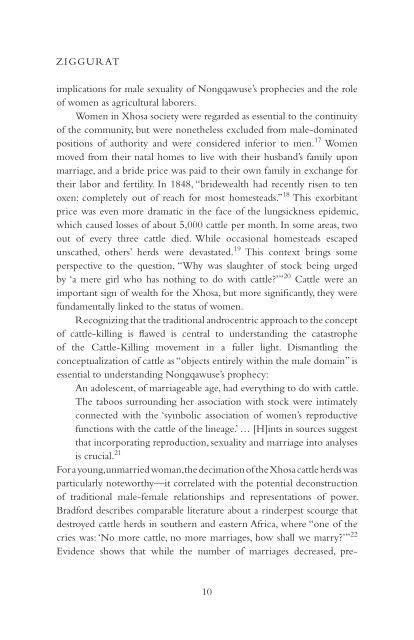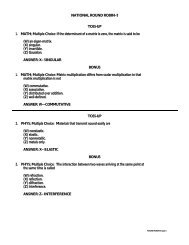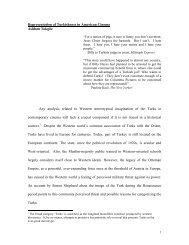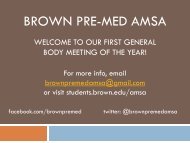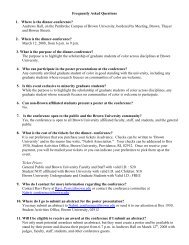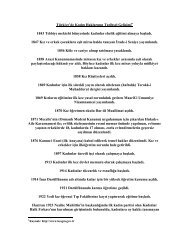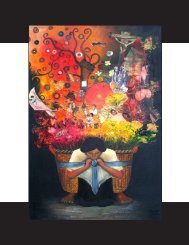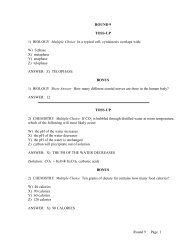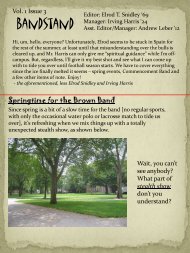Download as a .pdf file - Brown University
Download as a .pdf file - Brown University
Download as a .pdf file - Brown University
Create successful ePaper yourself
Turn your PDF publications into a flip-book with our unique Google optimized e-Paper software.
ZIGGURAT<br />
implications for male sexuality of Nongqawuse’s prophecies and the role<br />
of women <strong>as</strong> agricultural laborers.<br />
Women in Xhosa society were regarded <strong>as</strong> essential to the continuity<br />
of the community, but were nonetheless excluded from male-dominated<br />
positions of authority and were considered inferior to men. 17 Women<br />
moved from their natal homes to live with their husband’s family upon<br />
marriage, and a bride price w<strong>as</strong> paid to their own family in exchange for<br />
their labor and fertility. In 1848, “bridewealth had recently risen to ten<br />
oxen: completely out of reach for most homesteads.” 18 This exorbitant<br />
price w<strong>as</strong> even more dramatic in the face of the lungsickness epidemic,<br />
which caused losses of about 5,000 cattle per month. In some are<strong>as</strong>, two<br />
out of every three cattle died. While occ<strong>as</strong>ional homesteads escaped<br />
unscathed, others’ herds were dev<strong>as</strong>tated. 19 This context brings some<br />
perspective to the question, “Why w<strong>as</strong> slaughter of stock being urged<br />
by ‘a mere girl who h<strong>as</strong> nothing to do with cattle’” 20 Cattle were an<br />
important sign of wealth for the Xhosa, but more significantly, they were<br />
fundamentally linked to the status of women.<br />
Recognizing that the traditional androcentric approach to the concept<br />
of cattle-killing is flawed is central to understanding the cat<strong>as</strong>trophe<br />
of the Cattle-Killing movement in a fuller light. Dismantling the<br />
conceptualization of cattle <strong>as</strong> “objects entirely within the male domain” is<br />
essential to understanding Nongqawuse’s prophecy:<br />
An adolescent, of marriageable age, had everything to do with cattle.<br />
The taboos surrounding her <strong>as</strong>sociation with stock were intimately<br />
connected with the ‘symbolic <strong>as</strong>sociation of women’s reproductive<br />
functions with the cattle of the lineage.’ … [H]ints in sources suggest<br />
that incorporating reproduction, sexuality and marriage into analyses<br />
is crucial. 21<br />
For a young, unmarried woman, the decimation of the Xhosa cattle herds w<strong>as</strong><br />
particularly noteworthy—it correlated with the potential deconstruction<br />
of traditional male-female relationships and representations of power.<br />
Bradford describes comparable literature about a rinderpest scourge that<br />
destroyed cattle herds in southern and e<strong>as</strong>tern Africa, where “one of the<br />
cries w<strong>as</strong>: ‘No more cattle, no more marriages, how shall we marry’” 22<br />
Evidence shows that while the number of marriages decre<strong>as</strong>ed, pre-<br />
10


